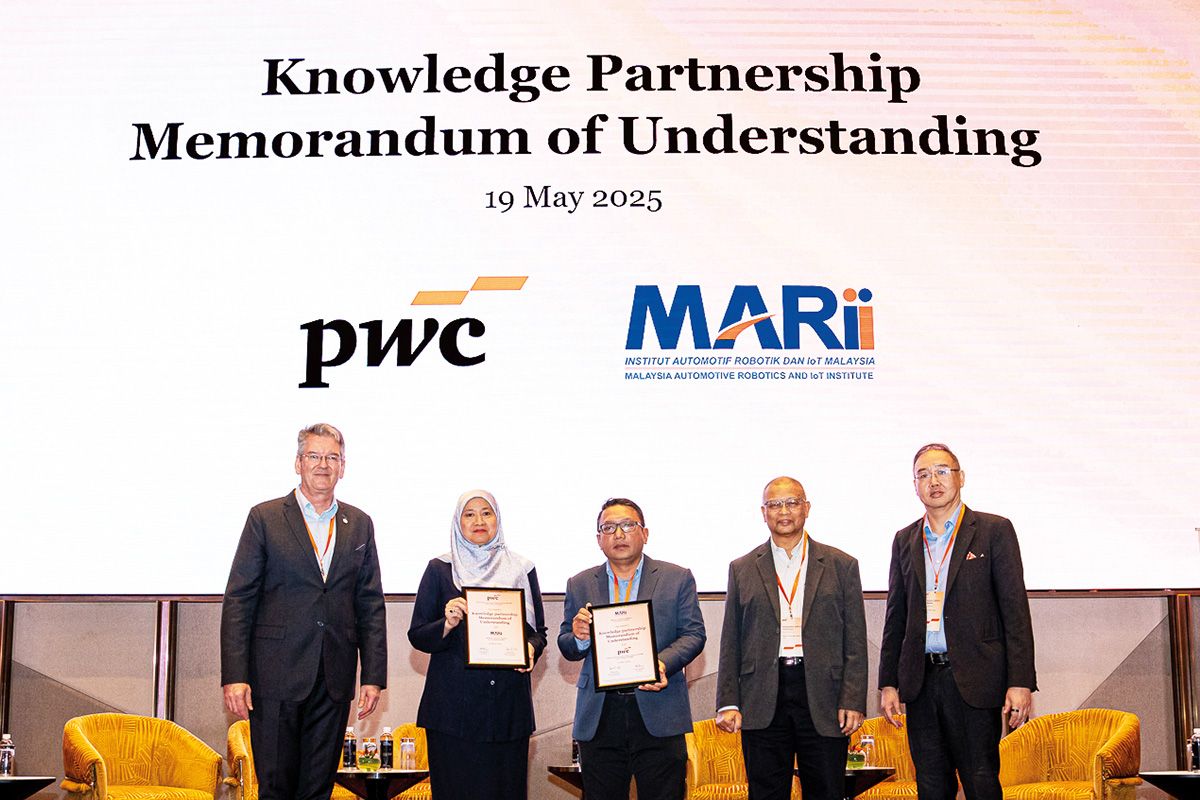
The automotive sector in Southeast Asia is undergoing a major shift, as traditional market leaders lose ground to emerging players. Chinese automakers, in particular, are making significant inroads in Asean markets with competitively priced electric vehicles (EVs), challenging the long-standing dominance of Japanese brands.
This trend was a key conversation topic at the recent PwC Automotive Asean Conference, a gathering of senior executives and key decision-makers from the automotive and mobility ecosystem. Drawing insights from PwC’s report, Overview of the Asean-6 Automotive Market, discussions around how shifting consumer preferences and rising EV adoption are transforming the region’s mobility landscape provided interesting food for thought for attendees at the event.
Japanese brands such as Toyota, Honda and Mitsubishi have traditionally dominated the Asean automotive market. While they still command a significant share, most experienced a drop in sales last year.
In 2024, Japanese carmakers held 63.9% of total market share across the Asean-6 countries — Indonesia, Malaysia, the Philippines, Singapore, Thailand and Vietnam — down from 68.2% in 2023. Among the top 15 automotive brands in the region, eight were Japanese, but all except Mitsubishi recorded a decline in sales volume, ranging from -6.6% (Toyota) to -34.5% (Isuzu).
In contrast, three brands posted notable sales growth: Malaysia’s Perodua (8.4%), Vietnam’s VinFast (179.5%) and China’s BYD Auto (62%) — the latter two being EV manufacturers.
According to findings presented by PwC’s Global Automotive leader Harald Wimmer and regional PwC executives at the conference, four major megatrends reshaping the industry are: climate change and the drive for decarbonisation; rapid technological disruption through software, artificial intelligence (AI) and robotics; geopolitical fragmentation shifting the influence of global markets to regional ones; and, changing societal dynamics, particularly around workforce and consumer behaviour.
These trends, Wimmer notes, are accelerating the transition towards EVs and fundamentally altering the future of mobility in the region.
The share of EVs in the Asean-6 market has risen sharply, from 9% (225,000 units) of private vehicle sales in 2023 to 13% (351,000 units) in 2024, Wimmer adds, citing the report.
This surge in demand is prompting original equipment manufacturers (OEMs) to forge cross-sector partnerships and build broader ecosystems to support the transition.
“Just looking closely at the sector, it [used to be just] automotive and industrial manufacturing. Now, you see growing opportunities for mining to cater for electrification needs because to build EV batteries, you need the minerals.
“You also need to have secure access to suppliers and technologies that were previously not relevant … [it is now] becoming more of a software engineering-heavy industry, which is a total shift in focus and requires a significantly different approach to how products and services are developed, manufactured and ultimately placed into the market,” says Wimmer.
However, despite the positive numbers, EV uptake remains uneven across Asean. Due to the region’s diversity, such adoption can be a little more complicated.
“Asean is a very diverse region and the maturity of each country differs a lot. We are seeing EV adoption at almost 80% and beyond in Singapore alone. Meanwhile, in the Philippines, it was below 2% and Malaysia was a little bit under 3%,” says Patrick Ziechmann, PwC’s Asean Automotive leader.
He attributes this disparity to factors such as geography and infrastructure challenges. Singapore’s compact urban environment simplifies the rollout of charging infrastructure, whereas archipelagic nations like the Philippines face logistical barriers.
Wimmer also points out that the shift to EVs is part of a broader transformation in the industry’s business model. While internal combustion engine (ICE) vehicles traditionally generate revenue at the point of sale and during servicing, software-defined vehicles (SDVs) enable post-sale monetisation way beyond traditional boundaries. Features such as autonomous driving or enhanced security can now be added via software updates, opening up new streams of recurring revenue, he says.
Adaptation through reinvention
As market dynamics shift, the automotive companies making the most progress are those reinventing themselves through new business models and previously untapped revenue streams.
“When I look at this industry convergence, software, telecommunications, mining and utilities players are now coming together to create new ecosystems, new value pools and business models,” says Wimmer.
He explains that the mobility sector comprises two broad groups: incumbents focused on established, cash-generating models — often centred around mechanical engineering and legacy technologies — and new entrants bringing in advanced technologies and access to specialised talent.
“The benefit is that on one side, you have the existing business model generating cash to fund the transformation and then you have the new players that oftentimes need to find collaborations and seed funding rounds in order to contribute to the transformation of the industry,” says Wimmer.
Ziechmann points to a case highlighted during the conference, where a German incumbent was actively forming alliances with newer players. These collaborations included financial institutions, software developers and battery firms. That was a strategic move by a traditional player to reinvent itself with new business models to gain access to new revenue streams.
Bridging a new ecosystem
Insights from PwC’s latest report and the strong reception to its recent automotive conference — which created an avenue for dialogue among players from across the mobility ecosystem — underscore that collaboration and reinvention are central to the sector’s future. Opportunities for reinvention will only be realised if there is a continued focus on upskilling and reskilling as the industry reframes its approach to developing specialised capabilities and competencies.
The conference was an important occasion for PwC Malaysia and the Malaysia Automotive Robotics & IoT Institute (MARii), with the exchange of a memorandum of understanding (MoU), formalising a knowledge partnership. Through this partnership, PwC is committing to deliver data-driven insights that will inform and support Malaysia’s automotive policy formulation, investment strategies, and long-term industry competitiveness.

Ziechmann notes that PwC plays an active role in connecting key industry stakeholders and bridging cross-sector gaps. “PwC can clearly support companies in the mobility sector, in their varied strategic, financial and operational issues, and this is all the way from market studies or feasibility studies in partnerships, to operational excellence, tax and reporting.”
The report identifies three critical focus areas for automakers looking to stay competitive in this dynamic environment: operational excellence, business model reinvention and strategic alliances. Opportunities for long-term transformation and meaningful value creation abound for those who lead the way in investing in digital solutions, exploring new revenue streams and forging partnerships with industry players.
PwC’s Asean Automotive Centre of Excellence (CoE), led by Ziechmann, is designed to support this journey. The centre collaborates with more than 500 experts across the region and currently engages over 50 participants from the Asean-6, alongside a strong network of partners in China, India, Japan and South Korea.
- FBM KLCI down to two-month low, energy stocks rise amid escalating Mideast tensions
- US warns against Iran retaliation as Trump raises 'regime change'
- Thai PM Paetongtarn defies calls to quit as border spat escalates
- Umno to consider motion to revoke Hishammuddin's suspension, says Khaled Nordin
- New registration applications for revised service, sales tax scope open from Aug 1, says MOF
- Malaysian glove makers poised for EU boost as China excluded from public tenders — CIMB
- Malaysia still on the radar, says CCCC as ECRL nears 2026 completion
- Johor eyes up to RM100b in investments by year end, banking on JS-SEZ momentum — MB
- Iran weighs retaliation against US for strikes on nuclear sites
- Tesla starts long-awaited robotaxi service with low-key roll-out

